TMK trench machine
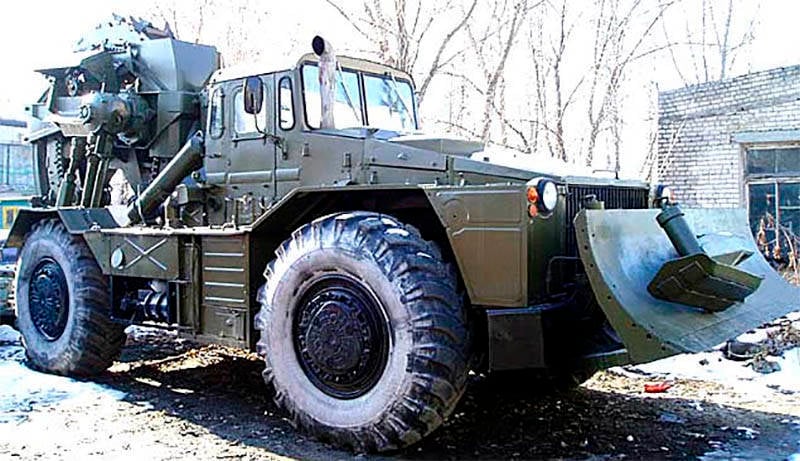
Fortifications are very important because they protect personnel and military equipment during combat operations. One of the simplest types of fortifications are trenches. The trench is a fortified earthen structure, which is intended for the sheltered movement of personnel on the battlefield, as well as firing from small weapons, observation and control of the fight. Trenches can be equipped with sites for the installation of machine guns, cells for shooters, as well as the most simple shelters for personnel units.
In appearance, any trench is a ditch of a certain length, which is dug in the ground. If its main task is to provide a concealed movement of personnel, various ammunition and other types of material, protected from enemy fire, along the front line or to the rear, then they are called “communication routes”. If a section of the trench is intended for firing small arms and equipped with positions for firing automatic weapons, grenade launchers and other small arms, as well as possibly diverse shelters for personnel (slots, shelters, dugouts), then this area is called a “small trench” or just "trench". For example, the “trench of the motorized rifle squad”.
Over time, the armies of the world needed to equip the troops with various trench excavators, which greatly simplified and accelerated the preparation of defense lines. Initially, equipping troops with excavators was carried out on the basis of the selection and testing of national-economy samples, but later (much later), through the development of special military models. A similar situation was typical for all classes of earth-moving military equipment, as well as other types of military engineering vehicles. The first trench excavators appeared in the USSR in the 30s of the last century.
During its existence, they have passed a serious path of development. In 1978, a new trench machine, TMK, was put into service. The trenching machine TMK is designed for digging trenches in non-frozen and frozen soils while equipping the defensive positions of the troops. This machine today relates to dual-use equipment and, as regards the set of its technical characteristics, most closely meets the army requirements and the requirements of the national economy.
TMK is a wheeled tractor based on the MAZ-538, on which trenching equipment and special dozer equipment was installed. This trench machine makes it possible to dig trenches in soils up to category IV inclusive (heavy clay with rubble, heavy clay, slate clay, density up to 1900-2000 kg / mX3). The machine is able to tear off a full profile trench with a 1,5 depth of meter in thawed grounds at a speed of 700 meters per hour, in frozen soils at a speed of 210 meters per hour.
The machine is equipped with a rotary tool body beskovshny type. The working equipment of TMK includes a hydraulic mechanism for raising and lowering the working body, a mechanical transmission. On the frame of the working body, there are passives of the passive type, which ensure the formation of inclined walls near the trenches. The soil lifted from the bottom of the trench with the help of throwers is scattered on both sides of the trench.
In addition, TMK has an auxiliary bulldozer equipment with a 3 blade width, which allows the machine to level the ground, fill ditches, holes, and dig pits and perform similar work. The basic wheel tractor MAZ-538, possessing a full drive, is equipped with a D-12А-375А engine, developing power in 375 hp Initially, the production was carried out at the Dmitrov excavator plant.
At present, the K-703МВ-ТМК-3 trench machine is in service with the Russian army. This trench machine, like its predecessors, consists of a base chassis, a rotary trench working body and a bulldozer. At present, the Special Design Bureau of Transport Engineering from St. Petersburg is engaged in the production of this engineering machine. It was decided to abandon the MAZ chassis, this model uses the well-known and recognizable K-703МВ wheeled tractor as the basic chassis, which is maximally unified with the K-703М industrial tractor. The modern TMK-3 trenching machine is a high-performance, highly mobile earth-moving device that easily finds its application not only in the Russian army, but also in the civil service.
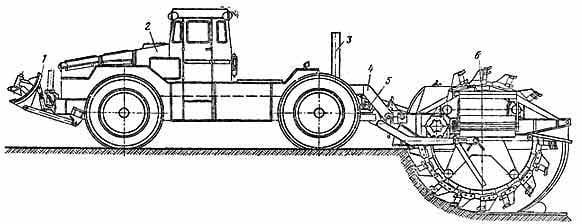
The value of earth moving engineering equipment
Currently, earthmoving equipment is available in most engineering-sapper units and in all engineering-sapper units of combined-arms units. Mainly this technique is used to solve positional problems, which are closely related to the construction of fortifications. Their main task is to help combined-arms units to “bury themselves in the ground”. Often for an infantryman to dig deeper into the ground is the only way to survive a battle. Even during the Second World War, the American General Bradley loved to repeat to his soldiers: "Dig, or bury you yourself."

At the same time, the “army” excavation works themselves are not so different from others. But the difference is still there. The fact is that in addition to efficiency and productivity in military engineering technology, other qualities are valued. With a superficial resemblance, civilian and military engineering technology often has different performance characteristics. However, their working bodies usually do not have fundamental differences. Moreover, for many decades, there was no need for special army earth-moving equipment.
However, after the end of World War II, our command of the engineering troops made a conclusion about installing special equipment and machines on the most maneuverable and fairly high-speed chassis. Between the 1940-60 for years in order to reduce the cost and unification of weapons adopted combat vehicles, which have already been used in the troops (in other combat arms). However, the events in Czechoslovakia clearly showed that the available engineering vehicles were lagging behind the combined arms and subunits on the march. This was the starting point for the creation of military equipment specifically for the engineering troops.
At the same time, the value of earthmoving equipment should not be underestimated. The trench of the motorized rifle squad has a length of approximately 100 meters and requires man-hours at the level of 200-300 to open small infantry blades (better known as small sapper). Large shovels, which the infantry simply does not have, it would take 100-150 man-hours. That is, the motorized rifle squad will tear off their trench during 2-3 days (minimum). Naturally, the enemy does not always give the infantry so much time for arranging positions. At the same time, a machine like TMK will do the job in 15-20 minutes. The infantrymen will only have to re-equip their positions: to equip rifle cells and dig holes that are blocked. They will cope with this task in half a day. At the same time, a motorized rifle platoon stronghold has a length of main trenches and message strokes of approximately 900 meters. These are already 2,5-4 hours of work for TMK or almost a week of hard work for the entire personnel of a motorized rifle platoon.
In this case, the trench is very important. According to the operational and tactical standards, it ensures the stability of the 1: 3 or 1: 4 defense, that is, the motorized rifle squad, buried in the ground, is able to repel an attack of a similar platoon. If we take into account the existing experience of both Chechen campaigns, we can conclude that trained and resistant infantry, with competent command, will be able to keep the enemy near their trenches for weeks. It is no coincidence that in all wars, after a successful break through of the defense, commanders demanded from their units a persistent and round-the-clock pursuit of the enemy’s retreating units even at the limit of their capabilities. The main thing - do not give the enemy to stop. To allow enemy infantry units to stop and at least dig a little into the ground meant slowing down or completely stopping the offensive. Therefore, the value of such seemingly clumsy and "non-combat" machines, like TMK, is very large.
Information sources:
http://www.saper.etel.ru/texnica-2/tmk.html
http://www.saper.etel.ru/fort/trans.html
http://mil-history.livejournal.com/611616.html
http://www.specmash-kb.com/shell.php?id=0&lng=rus
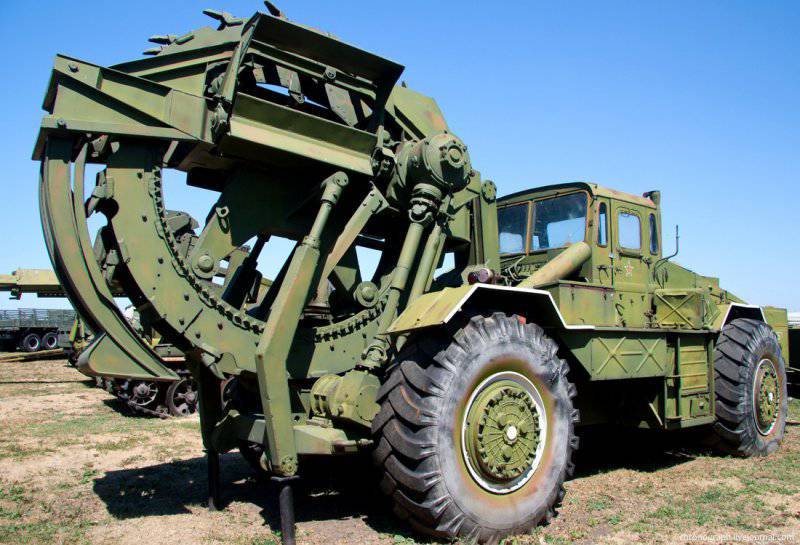
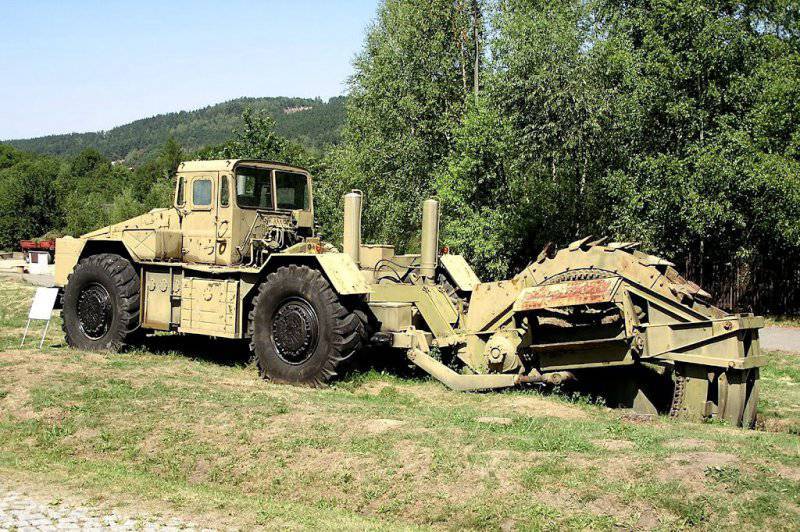
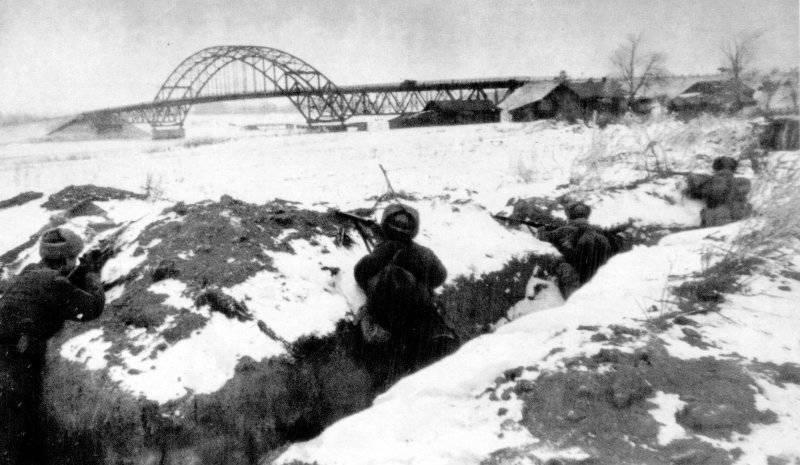
Information